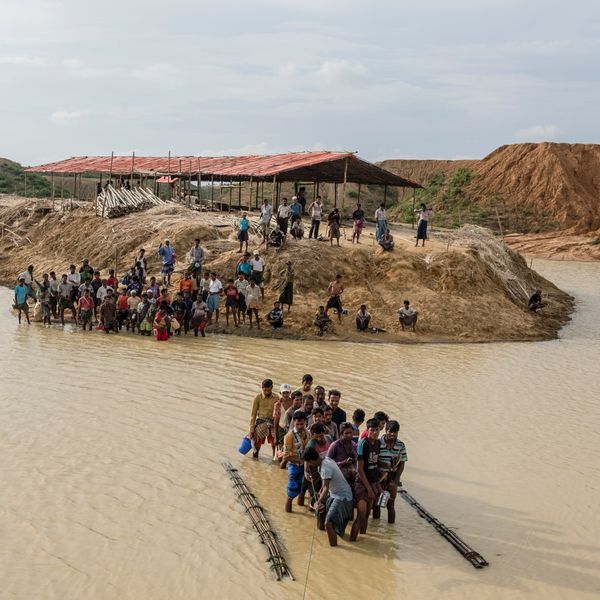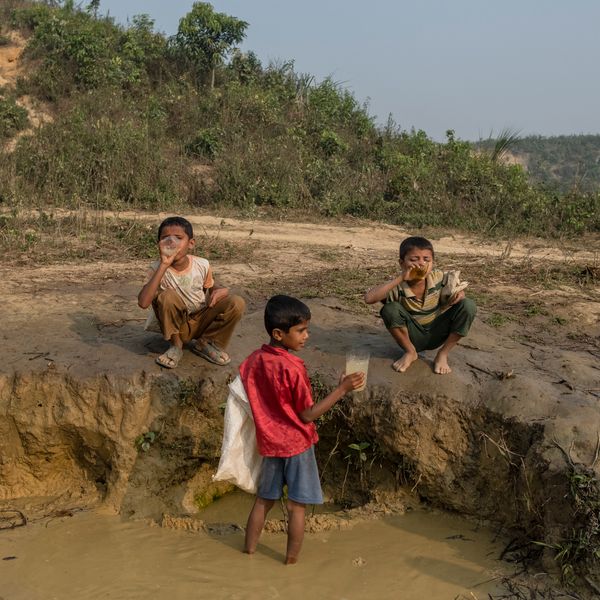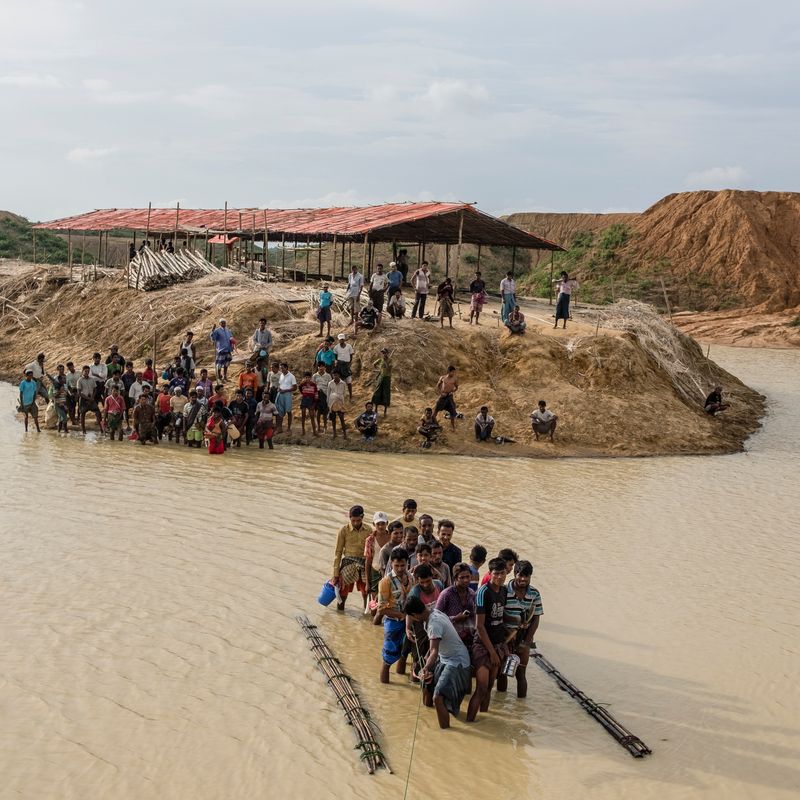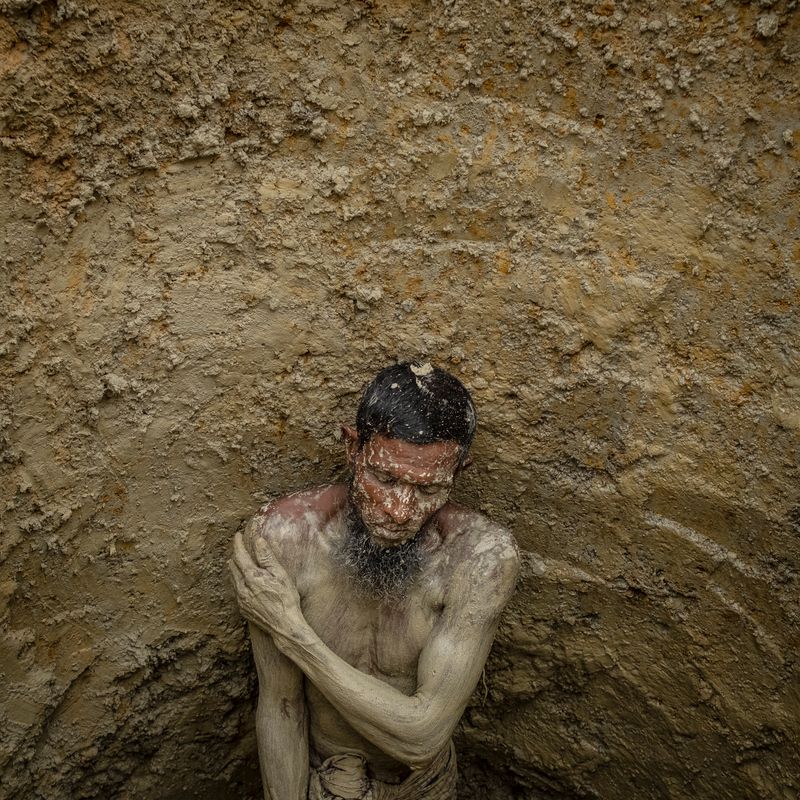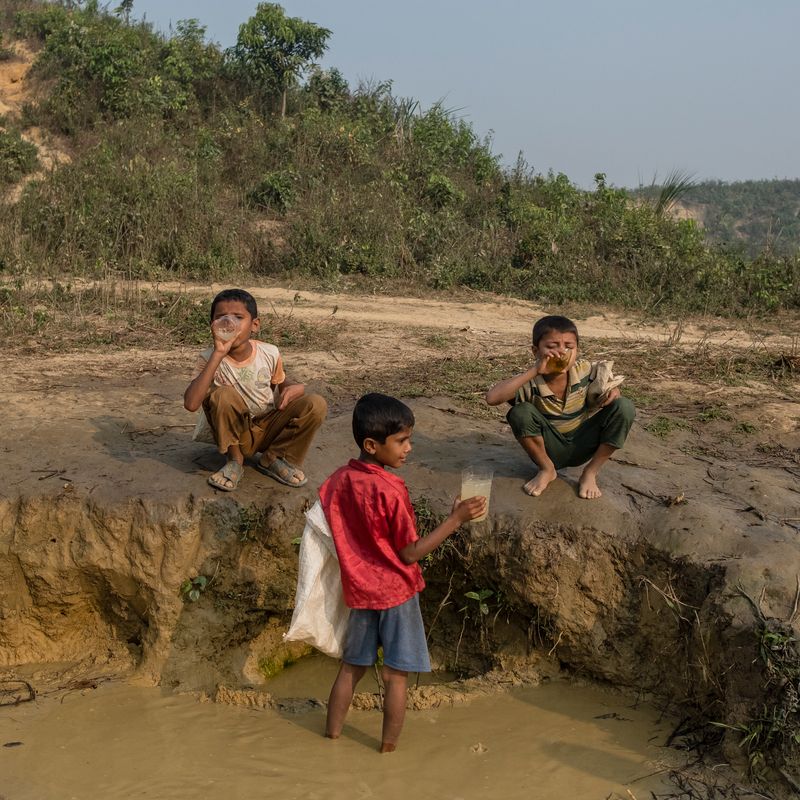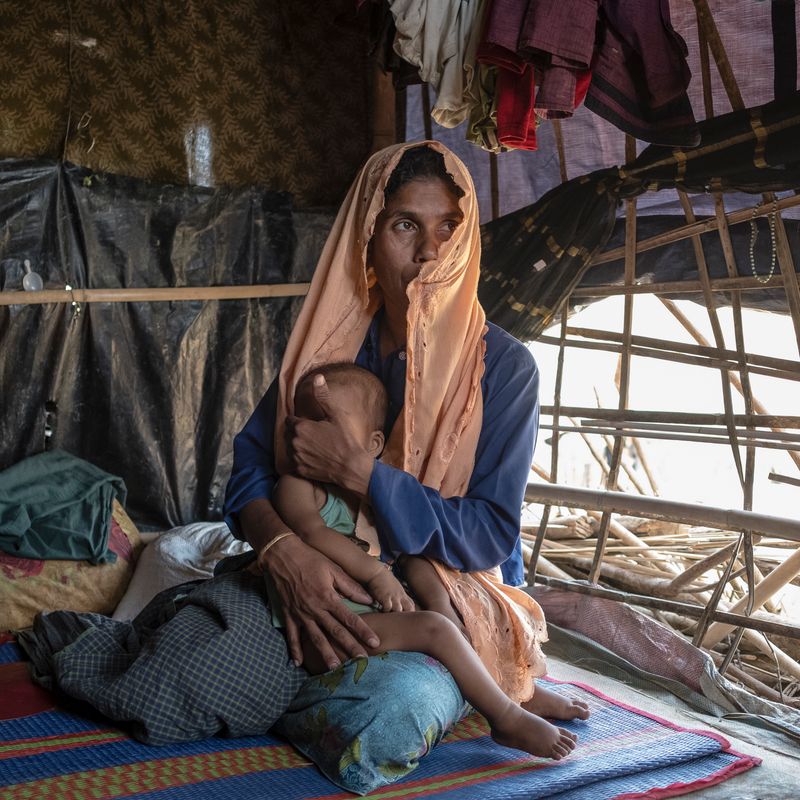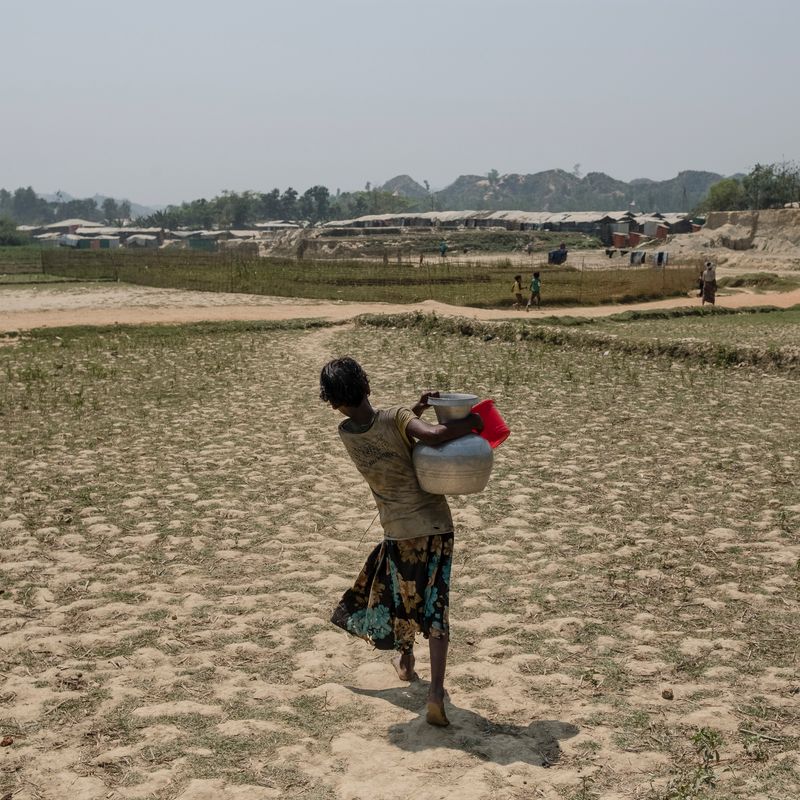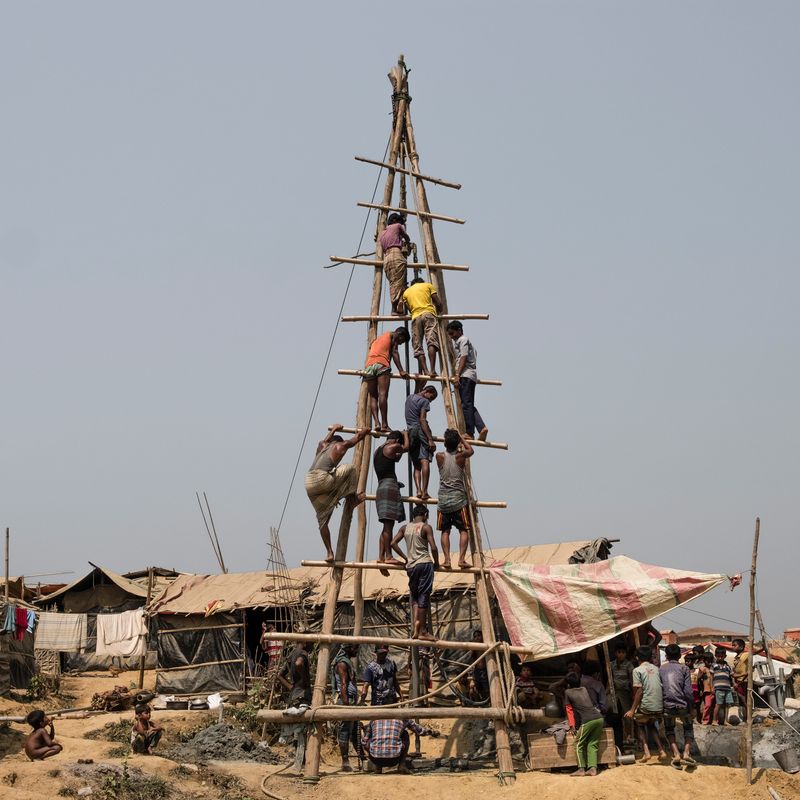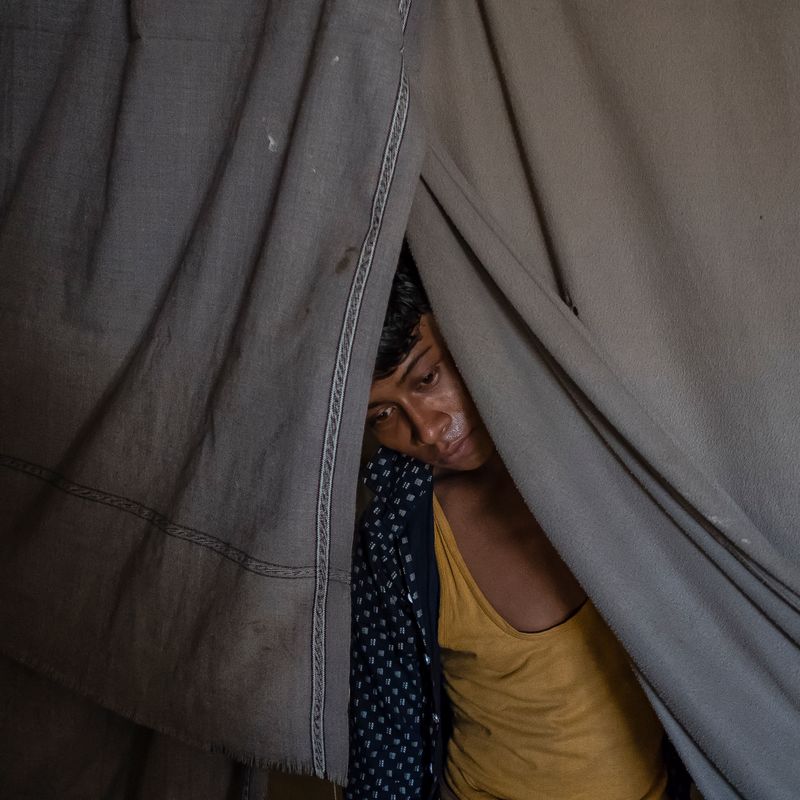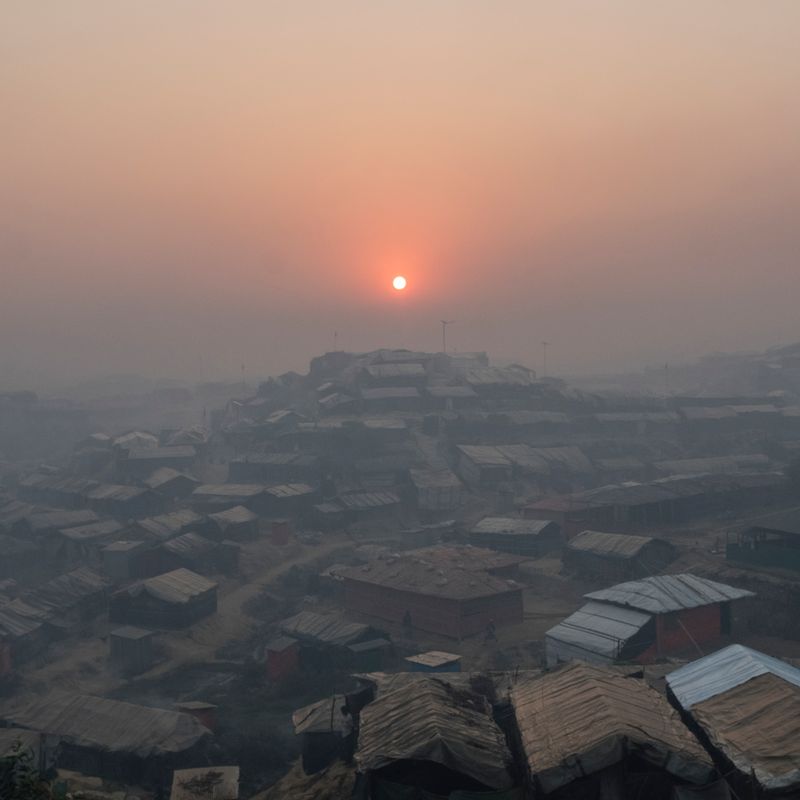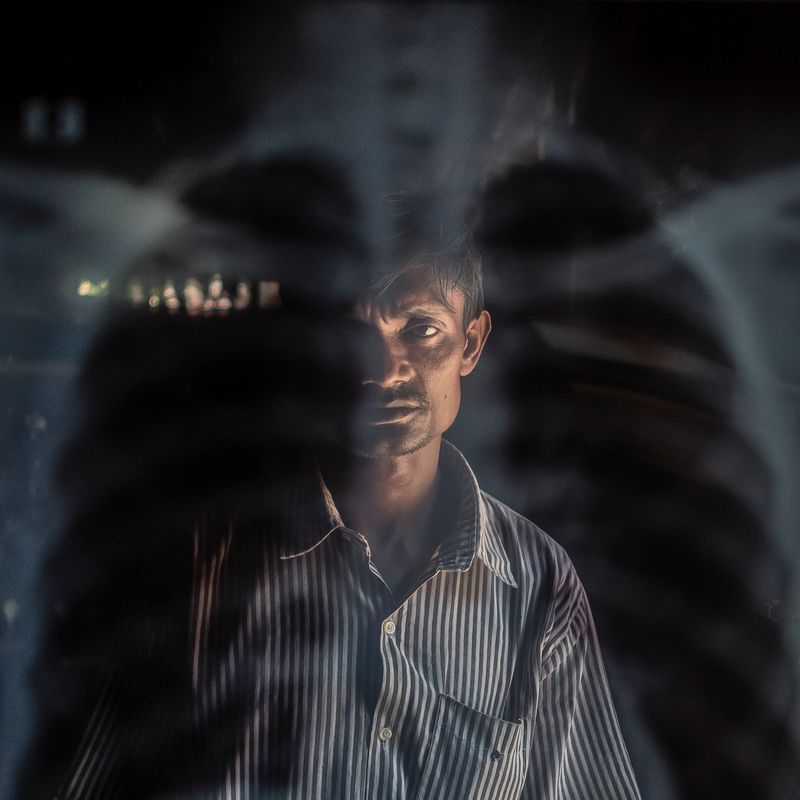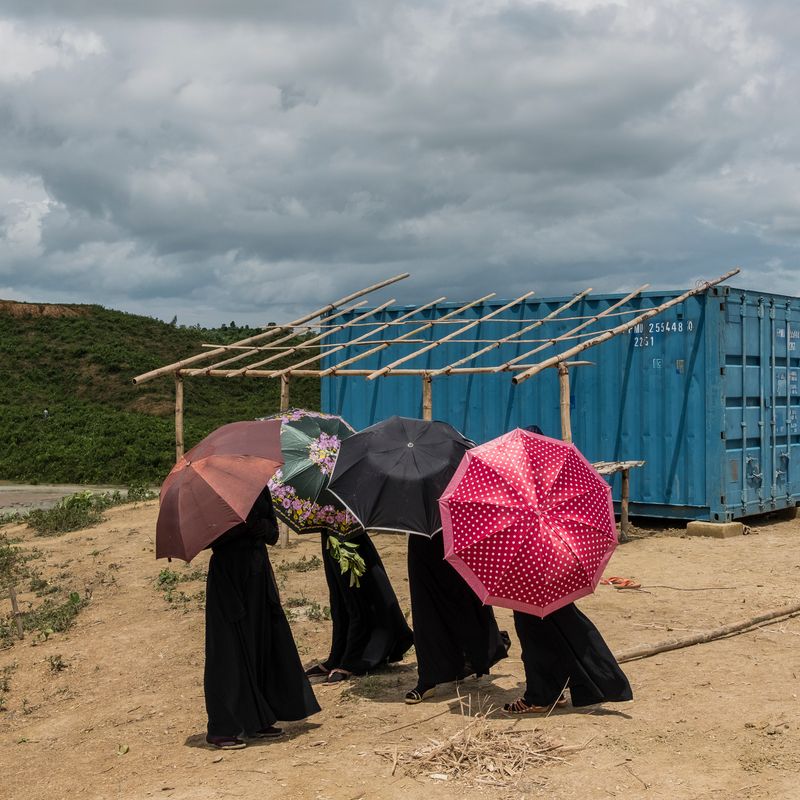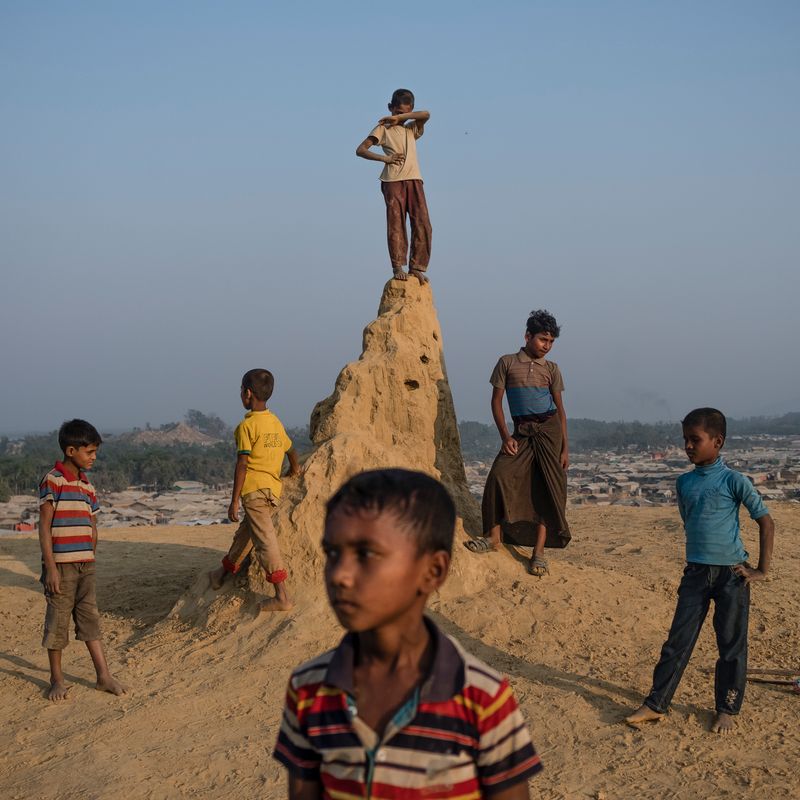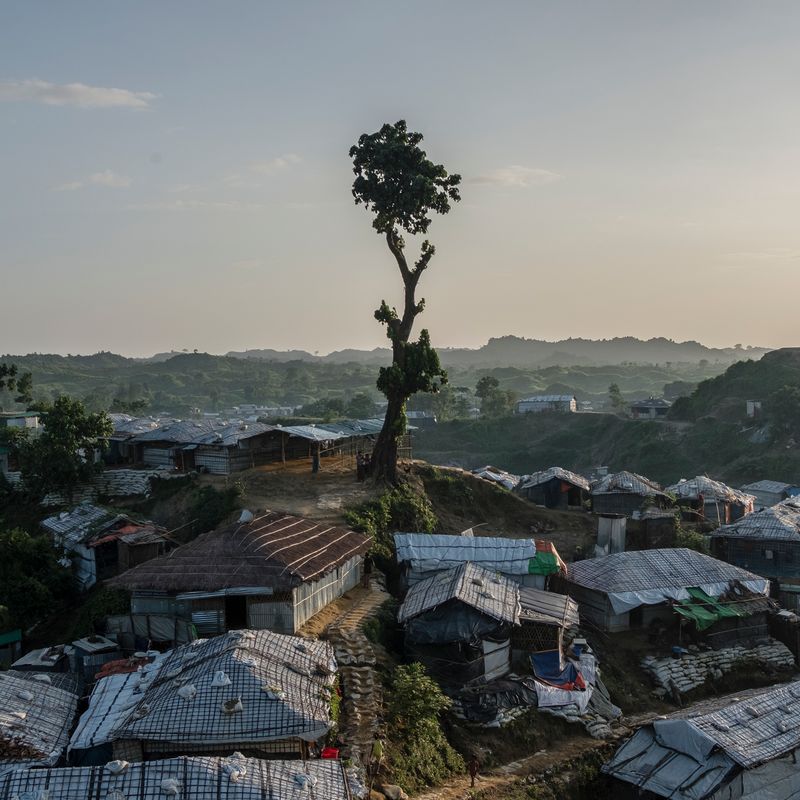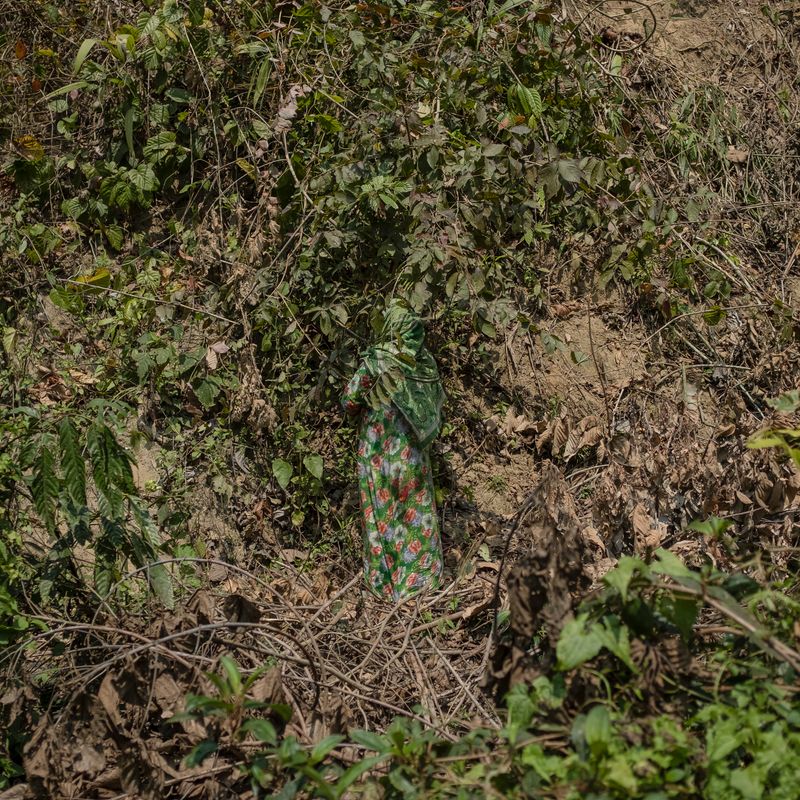The Wretched and the Earth
-
Dates2018 - Ongoing
-
Author
During August 2017, hundreds of thousands of people from the Rohingya ethnic group flocked to Bangladesh, fleeing persecution in their country of origin, Myanmar.
Today one million refugees are housed in makeshift camps in the Bengal region of Cox’s Bazar. While their living conditions are extremely precarious the future of these families remains uncertain. The project aim to document the environmental impact of a sudden mass migration in order to figure out the indissoluble relation between human being and its environment following two very pressing narratives: people struggling to survive with few precious resources, and the 'impact of the refugee crisis on an already beleaguered ecosystem. Everybody knows the indissoluble but fragile bond between the human being and his environment and during a mass migration this line is widely crossed. This is an hidden issue never seriously faced by the international community, especially in the emergency phases of the crisis, even if the consequences affect dramatically refugees themselves that are directly exposed to the host environment. The pressure on the local ecosystem is unsustainable: the water resources degradate quickly, the Teknaf nature reserve could disappear by 2019 increasing soil erosion, risk of land-sliding and flooding during monsoons an the use of the fuelwood collected in the forest within very small structures has caused an epidemic of acute respiratory infections, which is the leading cause of mortality among the Rohingya. Today we have 68 million refugees in the world, the highest number ever, and many mass migrations have to deal with the same issues. In a particularly fragile region of a country that is one of the most vulnerable to climate change in the world, the environmental crisis unravelling in Cox’s Bazar is an acute example of the challenges posed by mass migration.
The project has been done in 2018 and it’s the first chapter of a widest investigation, that will involved more aspects of the same issue in different crisis around the world.
